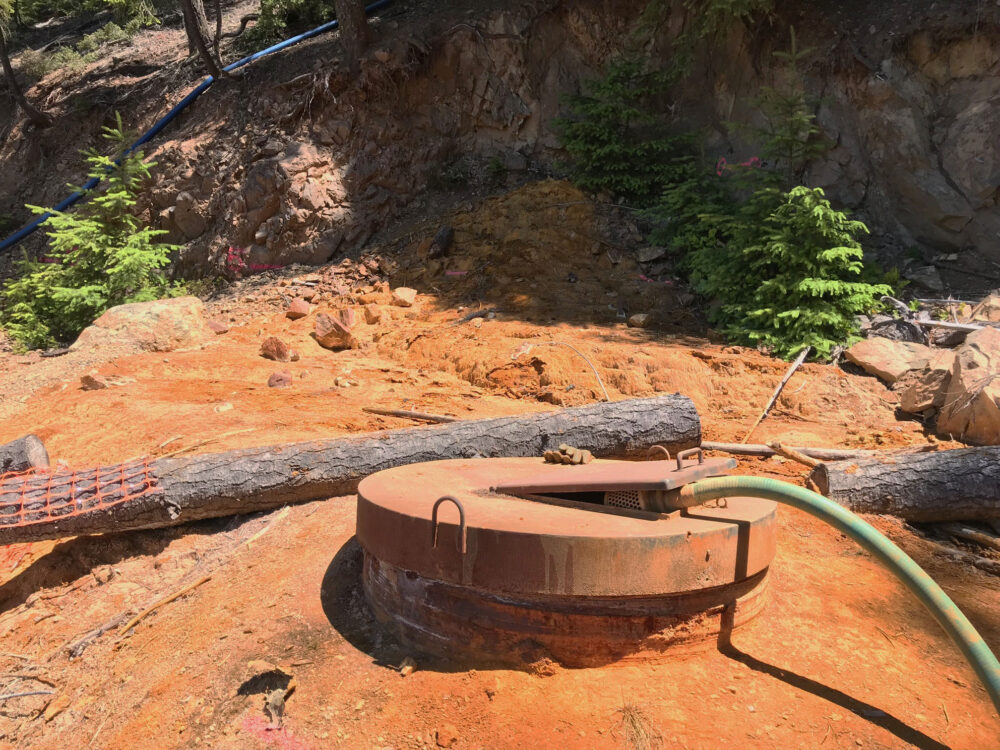We have much more to do and your continued support is needed now more than ever.
NWF Helps Score Win for Colorado Wildlife Haven

The “Roan” is the Roan Plateau, a massive, hulking presence in western Colorado, about 180 miles west of Denver and on the edge of the town of Rifle. I was a reporter based in Denver and writing stories about the New West’s version of a gold rush – a natural gas drilling boom. There were plenty of stories: a surge in new jobs, bulging municipal and state coffers, overtaxed public services, homeowners fighting to stop drilling on their land, fears about threats to air and water quality and health.
The Roan Plateau had become a kind of ground zero for the clash between those eager to tap western Colorado’s gas deposits and those determined to save the open spaces, roadless forests, backcountry, wildlife and pristine streams. There has been drilling on some of the Roan’s private land for several years and periodic attempts to mine the oil shale under the plateau as well as other parts of northwestern Colorado. But the public lands atop and surrounding the Roan Plateau had remained relatively unscathed by the periodic oil and gas drilling booms that marked so much of the West.
Wildlife haven
The Roan is home to some of the country’s largest mule deer and elk herds. Genetically pure Colorado River cutthroat trout are found in streams on top of the landmark, which stretches across tens of thousands of acres through varying elevations and diverse vegetation – sagebrush, pinion and juniper woodlands, aspen stands, Douglas firs. Trout Unlimited has invested a lot of time and money in restoring trout habitat on the Roan Plateau, which rises to roughly 9,000 above sea level.

Bruce Gordon of Ecoflight, which advocates for protecting our wild lands and wildlife habitat, took many reporters on overflights of the Roan as the fight over drilling on the plateau’s public lands heated up. Communities joined hunters, anglers and environmental groups in urging the Bureau of Land Management to consider a management plan that would protect wildlife habitat, air quality and the recreation that generates millions of dollars for businesses and local governments.
“The Roan Plateau has been one of our economic engines for the community because we’ve relied historically on hunting, fishing and grazing,” Rifle Mayor Keith Lambert told a reporter in 2007.
The National Wildlife Federation was among 10 conservation groups that sued in 2008 after the BLM sold leases on top of the Roan and at its base – important big game winter range – for $114 million. In 2012, a federal court ruled the BLM failed to consider more environmentally protective plans and ordered the agency to take another look.
Court-ordered mediation led to the settlement announced Nov. 21. Interior Secretary Sally Jewell and BLM Director Neil Kornze traveled to Denver for the announcement by Gov. John Hickenlooper and the parties to the lawsuit. The government will buy back leases held by the Bill Barrett Corp. Under the agreement, most of the public land on top would be closed to leasing or protected from surface disturbance. More than 50 percent of the public land at the base would be protected from surface disturbance. The oil and gas would have to be accessed from other locations, using underground, horizontal drilling.

New lease on life
“This is a significant victory, but the work isn’t finished. Sportsmen groups will continue to work with BLM and other parties in coming months to ensure that the balanced future for the Roan Plateau that is envisioned in these settlement provisions are adopted by the BLM in the final Resource Management Plan,” said John Gale, NWF’s sportsmen’s campaign manager.
Proponents of the original plan that opened the Roan to thousands of new wells have argued that the area isn’t wilderness, that there’s already wells, pipelines and truck traffic on private lands on the plateau. But there’s also plenty of undisturbed backcountry, plants not found anywhere else in the world, stunning vistas and, as the BLM has acknowledged, some of the most biologically rich country in Colorado. Besides elk and deer, the Roan is habitat for black bears, mountain lions, peregrine falcons, bald eagles and other birds.
The Roan Plateau has often been described as an oasis surrounded by spreading oil and gas development. There are more than 12,000 wells in the area and a proposal by the BLM could add up to 15,000 new wells on other lands near the Roan.
Which raises the question: Do we have to punch holes everywhere we know oil and gas exist? Communities, conservationists and activists have worked for more than a decade to make sure there is still some space left for wildlife, some backcountry left for people to visit, some places we can all agree are just too special to drill.























